Dick Gray's T-37 Near California City, California 8 November 1982 Big Shoes... Richard Eben “Dick” Gray was born March 11, 1945 in Newport News, Virginia. The second son of test pilot and engineer William E. Gray, who was one of the five prime NACA, the predecessor of NASA, test pilots at Langley Field, Virginia, during World War II. 
| Logo of Society of Experimental Test Pilots (SETP) |
Growing up in a competitive family, Gray had graduated with a Bachelor of Science degree in aeronautical engineering from San Jose State University, where he excelled at running track, in 1969 on a scholarship from the Society of Experimental Test Pilots (SETP), of which his father had been a member. In August of 1969, he also earned aviation maintenance licenses for mechanic work on airframes and powerplants. After college, he joined the U.S. Navy, and earned his Naval Aviator wings in January 1971 and was assigned to fly F-4 Phantoms at Naval Air Station Miramar. In 1972, he flew 48 combat missions in F-4s in Southeast Asia while assigned to VF-111 aboard the USS Coral Sea, making some of the first air strikes in North Vietnam after Tet. After making a second cruise in 1973, Dick was assigned to Air Test and Evaluation Squadron Four (VX-4) at NAS Pt. Mugu, as a project pilot on various operational test and evaluation programs, and joined SETP around the same time, making him the first second-generation member of the organization. He served as chief test director for the AIM-7F Sparrow in 1975-76 before being assigned as an F-14A project pilot on the Air Combat Evaluation/Intercept Missile Evaluation (ACEVAL/AIMVAL) program. He was also the chief test director for the operational test and evaluation of the television sight unit and the dual-seat visual-target-acquisition system in the F-14A. In 1978 he was assigned back to VF-111 at NAS Miramar as an F-14A pilot. Following Foot Steps... Joining NASA in December of 1978, he became an aerospace research pilot and operations engineer at NASA's Johnson Space Center in Houston, Texas, working out of Ellington Field, until he transferred to Dryden. At Houston, worked as an instructor pilot for astronaut proficiency in the T-38s. He later became the chief project pilot on the WB-57F high-altitude research project and served as the prime television chase pilot on the T-38 “Chase 2” for the landing portion of the first three Space Shuttle orbital flight tests.  | | Dick Gray in front of the AD-1 in 1982 (Historical Photos: NASA DFRC) |
Gray then became a research test pilot at NASA's Ames-Dryden Flight Research Facility (as Dryden Flight Research Center, Edwards, California, was called from 1981 to 1994) when he transferred there in November 1981. At Dryden, he was a pilot on the F-14 Aileron Rudder Interconnect project, the NASA AD-1 Oblique wing research aircraft, and the F-8 Digital Fly-By-Wire project, where flew a series of missions in 1982 with a dummy fuel probe to see how the fly-by-wire system handled in the aerial refueling environment, culminating in a successful link-up with a Navy KA-6 tanker. He also flew the F-104, T-37, and F-15 airplanes, and was serving on the SETP Board of Directors as Southwest Section Technical Adviser. In preparation for the ARI project, Dick underwent a special Navy spin training program at NAS Patuxent River, Maryland. With over 3,700 hours of logged flight experience in over 30 different types of aircraft, and an airline transport pilot rating, he nevertheless had little experience with inverted spins. On Friday, November 5th, 1982, he underwent a flight demonstration in a T-2C airplane at Patuxent with an instructor from the Navy’s Test Pilot School there. The next Monday, he was going to fly NASA 807, a former Air Force T-37B jet trainer. "Tweety-bird"... Built by Cessna, NASA 807 was used by the NASA Dryden Flight Research Center, Edwards, California as a chase aircraft for many research flights. Nicknamed "Convertors" for their uncanny ability to convert JP into noise, it was also used as a probe aircraft wake vortices for studies in support of the national effort to reduce the hazards associated with the trailed wake vortices of large aircraft. 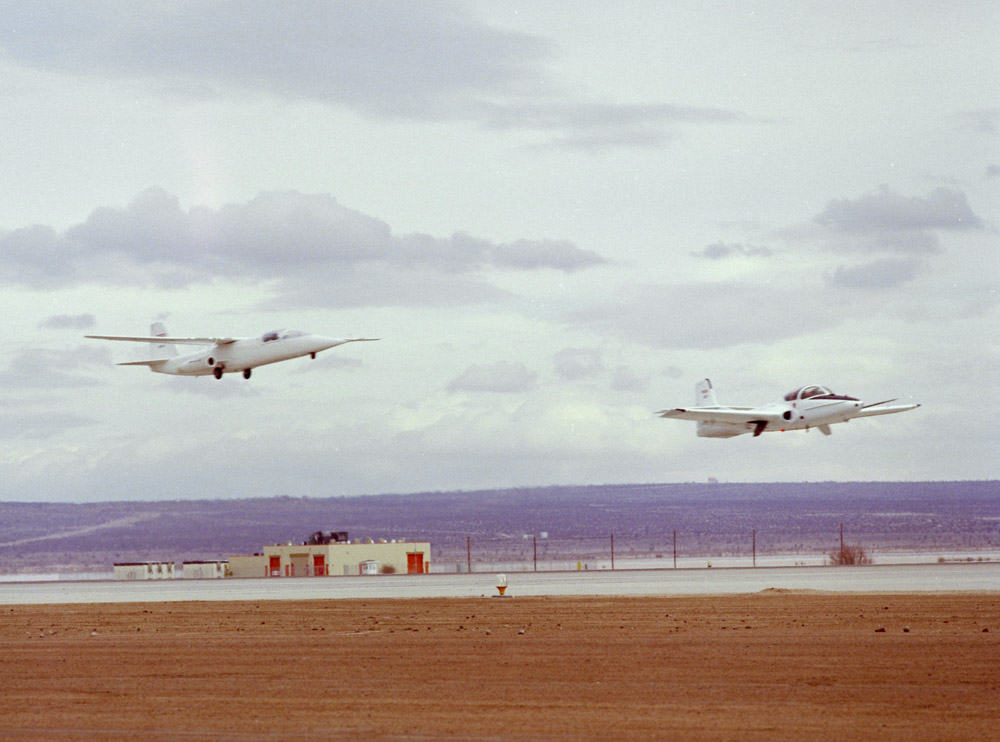 | | NASA 807 (right) giving chase to the AD-1 (left) | 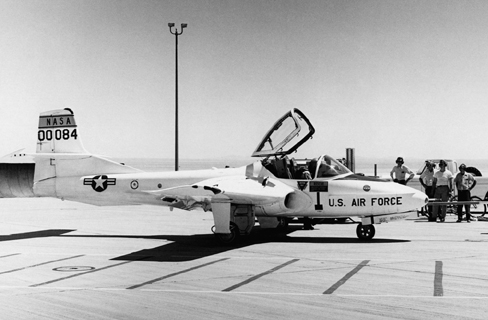 | | NASA 807 on the Flight Research Center's ramp in 1974 | 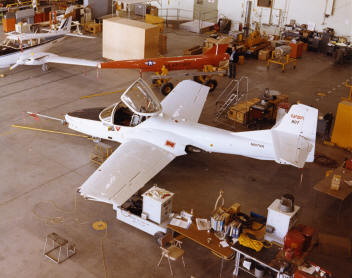
| NASA 807 in one of the hangars at Edwards |
The effectiveness of using selected combinations of flap and spoiler positions on large aircraft to alleviate these air disturbances was evaluated by measuring the upsets imposed on these probe aircraft as they flew behind the large aircraft. The T-37B was also equipped with a Light Bar Attitude Indicator, which was designed to help maintain proper aircraft attitude during high altitude night flying. On the unit, a standard four-inch Attitude Direction Indicator (ADI) was modified to project an artificial horizon across the instrument panel for pitch and roll information. A light bulb was put in the center of the ADI and a thin slit cut on the horizon, resulting in a thin horizontal sheet of light projecting from the instrument. The intensity of the projected beam is such that it can only be seen in a darkened room or at night. On November 8th, 1982, Gray filed a VFR flight plan to operate in the local test area at 20,000 feet and below. After taxiing toward the runway, and setting his transponder to 4307, he requested and received permission from Edwards Approach Control to operate in the local test area of Complex 1 & 2 of the R-2515 Restricted Airspace. The weather was excellent with high clouds at 22,000 feet and visibility of 7 miles plus. Taking to the Skies... After takeoff, the pilot made a routine check-in with the Approach Control and climbed to approximately 19,500 feet. The radar data indicated that the pilot made some type of slow speed maneuver or series of maneuvers while descending to approximately 13,900 feet. The exact occurrences of what happened next were never fully determined by investigators, but it was presumed that Gray then climbed again to around 19,300 feet and apparently entered a spin which was not recovered from. Gray initiated ejection but at too low an altitude to save his life. He was killed instantly by ground impact, and the aircraft struck the desert floor in an erect left spin, in a slightly left wing down, relatively flat attitude. The left engine was operating at high thrust and the right engine was near idle thrust, destroying the craft beyond recognition in the desert northeast of California City at 1:15 in the afternoon. Investigators, a “Who's Who” of Edwards flight testing, including Fitz Fulton, David Roberts, and James Patton, found the wreckage of NASA 807 struck the ground in a very flat attitude and, other than the canopy, ejection seat and nose access doors, was mostly confined to an area only a few feet larger than a top view of the airplane. However, the post impact fire, fuel by jet gas, consumed almost all of the airplane. 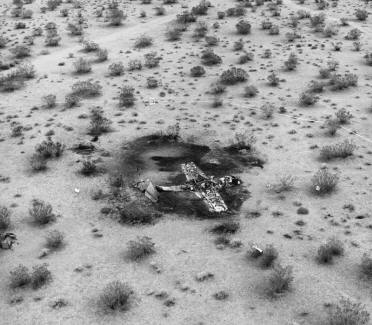 | 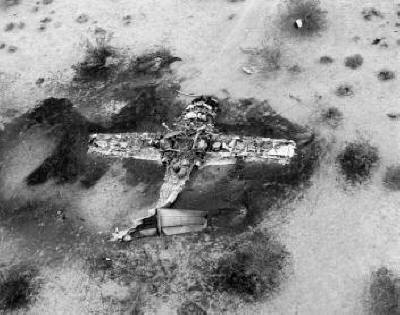 | | Oblique view of NASA 807's crash site | Near bird's eye of NASA 807 post-impact |  |  | | Ground view of the crash site from the north - note the cockpit canopy in the foreground | Investigators work the crash site, looking for clues | 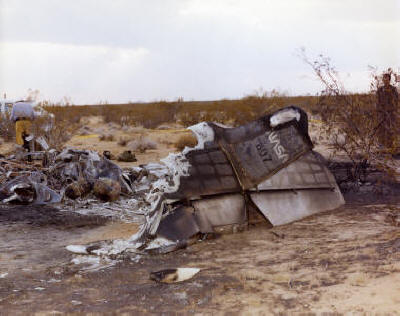 | 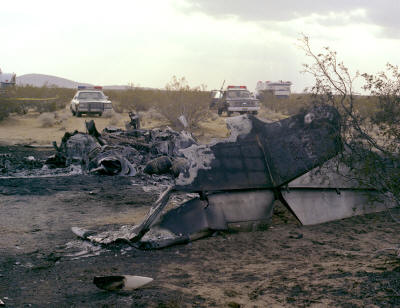 | | The tail of NASA 807 on the desert floor | Note the presence of first responders | 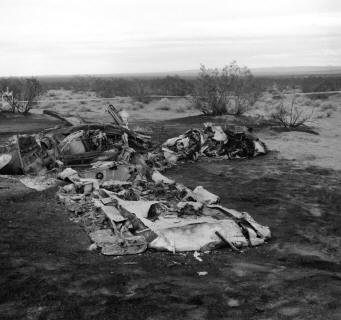 | 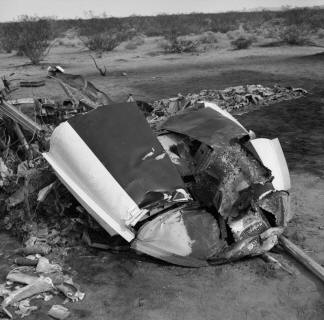 | | View of the starboard wing | The nose of NASA 807 post-impact |
Non-Standard Equipment... Evidence was found that Gray's flight helmet struck against the Light Bar Attitude Indicator, perhaps with sufficient force to cause temporary incapacitation. The presence of the Light Bar device was not standard on the T-37, but the senior pilots at Dryden determined that its installation would not inhibit the safe flight of the plane. | In the end, the accident investigation board, after reviewing all the evidence and testimony, in January of 1983 found that no probable cause could be established, but recommended that the Dryden Flight Research Facility develop procedures whereby any modification of DFRF aircraft involving safety of flight must have written approval, revise its procedures to assure currency of pilots' flight manuals, develop a procedure to clearly define Fact Sheet information as to whether it is advisory or directive in nature, and develop a policy to enhance management oversight of research support and proficiency flights which are currently covered under blanket approval. | 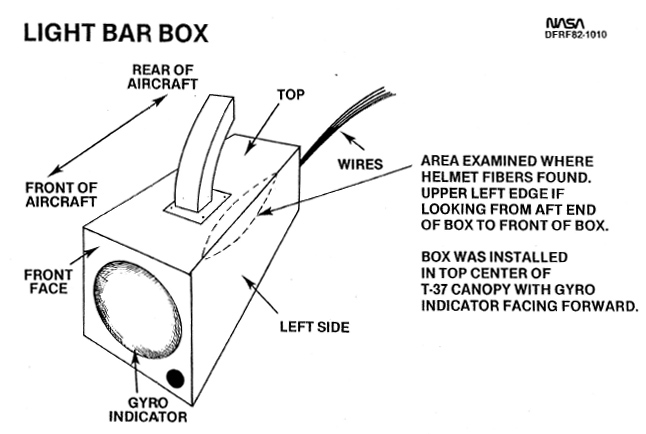 | It was further recommended by the board that information describing the incapacitation and disorienting effects of transitory negative-positive "G's" on pilots be disseminated to all NASA aircraft operations activities, and that all NASA flight managers re-emphasize the importance of adherence to emergency escape decision altitudes.
Lastly, the Accident Board recommended that NASA should require that to the extent possible, as determined by operational and economic considerations, all of their aircraft should be equipped with flight data recorders. |  |
 Dick Gray’s accident had one worthwhile result. Dryden Flight Operations initiated a requirement for planning and monitoring of any flights, including proficiency, where unusual and demanding maneuvers were to be performed. This has helped in determining the cause of several mishaps in the intervening years. Dick Gray’s accident had one worthwhile result. Dryden Flight Operations initiated a requirement for planning and monitoring of any flights, including proficiency, where unusual and demanding maneuvers were to be performed. This has helped in determining the cause of several mishaps in the intervening years.
Dick Gray is remembered at the Dryden Flight Research Center in a matter typical to the aviators whom have perished in flights originating from Edwards AFB - the naming of a street for him - Gray Avenue, which is located near Gate 35 at the facility. He was only the third NASA test pilot to be killed on a test flight from Edwards. The Crash Site Today... Given the way the T-37B impacted, the crash site is very compact in size, and covers less than 500 square feet in area. Glass from the plane's navigation lights still litter the sand, and the debris is heavily concentrated in and around the impact. 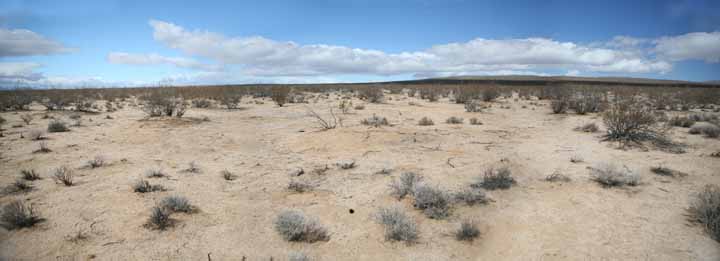 | | (click here for an enlarged view) | | | 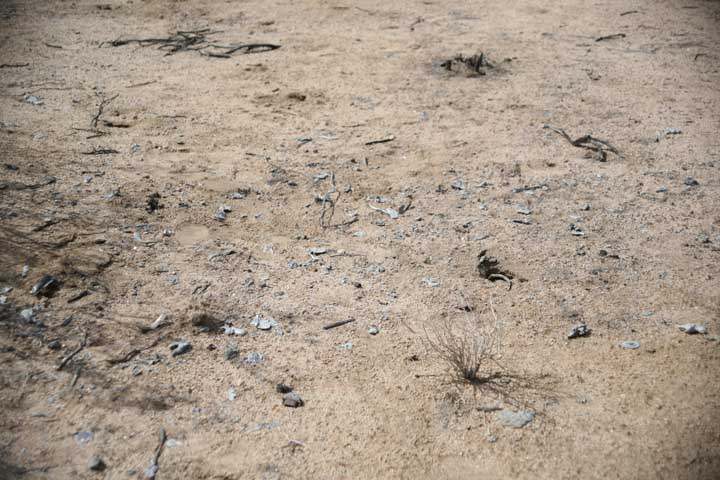 | 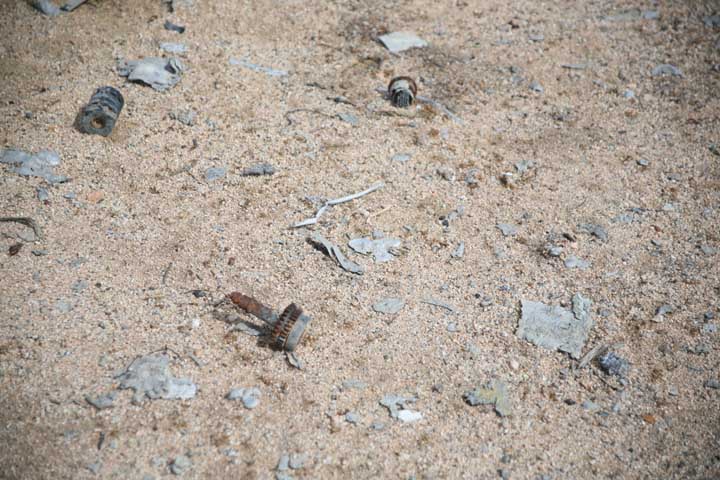 | | Scattered metal debris litters the desert surface | More broken metal and gear segments | | | | | An American flag, given by the Gray family, placed at the crash site of NASA 807 |  |
|
